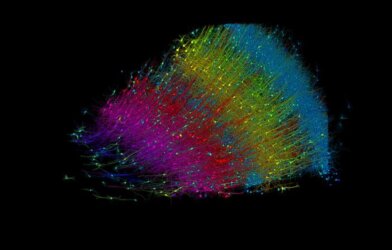Newly developed blood tests are making it possible to accurately diagnose amyotrophic lateral sclerosis (ALS) earlier in the course of the disease, when there is much to be gained by intervention. The breakthrough could help patients start treatments well before their muscles have begun to break down, essentially trapping them inside their own body.
ALS is a degenerative disease of motor neurons in the brain and spinal cord, with muscular weakness and atrophy. Usually, death occurs in 2 to 4 years. It can be difficult to diagnose, even with rigorous investigation, because other diseases resemble ALS in its early stages.
Neurofilaments — proteins with essential roles in the cells and fibers of nerves — are the substances of interest. When the nervous system is damaged by disease, the neurofilaments leak into the cerebrospinal fluid (CSF). They also leak into blood, but in lower concentrations compared to CSF.
In the study, scientists demonstrated that the levels of neurofilaments in blood and the CSF can differentiate ALS from other diseases that may resemble early ALS. Neurofilaments are more concentrated in the CSF of patients with ALS, compared to other diseases.
More sensitive methods of analysis
Measuring neurofilament levels in the blood has been difficult because they occur at such low concentrations. Fortunately, newer, more sensitive analytical methods have been developed to measure the concentrations more easily.
The study is based on blood and CSF samples collected from 287 patients who had been referred to the Department of Neurology at the University Hospital of Umeå for investigation of possible motor neuron disease. There were 234 patients diagnosed with ALS. There were significantly greater levels of neurofilaments in blood and CSF in the patients diagnosed with ALS than in patients who were not.
The study was led by first authors Fani Pujol-Calderón, postdoctoral fellow at Sahlgrenska Academy, University of Gothenburg, and Arvin Behzadi, doctoral student at Umeå University and medical intern at Örnsköldsvik Hospital.
“Finding suspected cases of ALS through a blood test opens up completely new opportunities for screening and measuring neurofilaments in blood collected longitudinally,” Behzadi says in a statement. It enables easier quantification of treatment effects in clinical drug trials. “Finding ALS early in the disease course may facilitate earlier administration of pharmaceutical treatment, before the muscles have atrophied,” he adds.
The study is published in the journal Scientific Reports.












